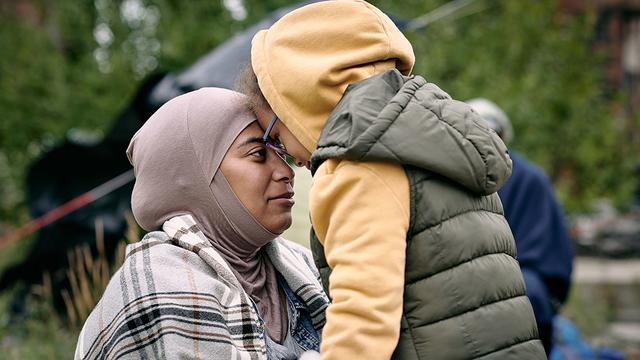The impact of investing in education, language skills, and job training for refugees who settle in the United States tells a gendered story, according to a new analysis by a team of researchers at the Humphrey School of Public Affairs.
Their findings raise the question of how the U.S. can rebuild its resettlement program to ensure that all refugees, regardless of gender, have a chance to thrive.
Kimberly Horner, a doctoral student at the Humphrey School who researches the local reception of immigrant populations, summarized their work in a recent article for the Gender Policy Report, published by the School’s Center on Women, Gender, and Public Policy. Here’s a summary.
Reinvesting in Refugees
By Kimberly Horner
After four years of reducing refugee resettlement under the Trump administration, the United States is facing renewed calls to respond to the global refugee crisis. Millions have been displaced by protracted conflicts, while emergency evacuations were precipitated by the Taliban’s return to power in Afghanistan.
A swift increase in refugee admission to the U.S. is critical, yet so too is increased investment in resettlement that will support both higher refugee admissions as well as a large number of evacuated Afghanis admitted to the U.S. through Special Immigrant Visas (SIVs) or parole.
Refugees resettled in the United States often arrive at a disadvantage compared to other immigrants, as their flight from persecution disrupts education or employment and precludes investment in skills such as language acquisition.
After arrival in the U.S., investment in human capital such as education, language classes, and job training are essential for successful economic integration. However, refugees must consider the tradeoffs involved, weighing the potential economic penalties and payoffs of their investments.
My colleagues at the Humphrey School of Public Affairs and I find that these tradeoffs are experienced differently by refugee men and women, with women ultimately failing to achieve economic parity with refugee men.
The Biden administration has committed to restoring prior levels of refugee resettlement, targeting an admissions cap of 125,000 refugees in fiscal year 2022. To reach this goal, the U.S. resettlement program must also rebuild capacity—with careful consideration of how it rebuilds, what it prioritizes, and for whom.
To understand more about the impact of human capital investment among refugees, my colleagues and I analyzed data from over 3,000 refugee households that participated in either the 2016 or 2017 Annual Survey of Refugees (ASR), a national survey of refugees who resettled in the United States in the previous five years.
Key findings:
- Refugees who settle in the United States are encouraged to quickly find employment, and are generally afforded cash assistance and medical assistance for a mere eight months after resettlement, though some individuals and families qualify for other government-sponsored benefits.
- In the push to obtain employment, refugees may miss opportunities to participate in education, English language classes, or job training—collectively called human capital investment—that would allow for longer-term economic advancement.
- Gender plays a prominent role in human capital investment. Refugee women were more likely than men to have recently enrolled in education or English classes, but if they have young children to care for, they were less likely to enroll in these courses.
- Although refugee women were more likely to undertake human capital investments and see greater long-term benefits when compared to refugee men, they still earned less than men regardless of the men’s participation in education or job training.
- Refugee women with young children are not accessing opportunities to the same extent as those without children. If they are less fluent in English, they’re less likely to participate in education or job training. There may be needs around childcare or program accessibility for those with limited English proficiency.
Moving forward in the rebuilding process of U.S. refugee resettlement, there must be continued efforts to advocate on behalf of refugee women, to incorporate the voices of refugee women, and to identify gender-specific barriers and opportunities in order to empower refugee women.
About the Gender Policy Report
The Gender Policy Report is a nonpartisan, multidisciplinary effort that puts academic research into short, accessible formats, and into the hands of policy makers and advocates, with the goal of promoting greater gender equality and equity in all policy domains. Sign up to receive new posts by email.



